
Concept explainers
In the circuit of Fig. 8.95, a 3 mF capacitor is accidentally installed instead of the inductor. Unfortunately, that’s not the end of the problems, as it’s later determined that the real capacitor is not really well modeled by an ideal capacitor, and the dielectric has a resistance of 10 kΩ (which should be viewed as connected in parallel to the ideal capacitor). (a) Compute the circuit time constant with and without taking the dielectric resistance into account. By how much does the dielectric change your answer? (b) Calculate vx at t = 200 ms. Does the dielectric resistance affect your answer significantly? Explain.
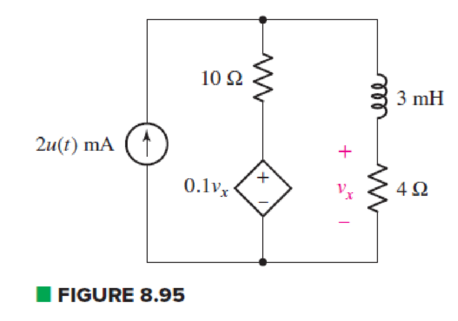
(a)
Find the value of circuit time constant with and without taking dielectric resistance and explain the change in time constant by dielectric resistance.
Answer to Problem 77E
Value of time constant without dielectric is
Explanation of Solution
Given Data:
Value of capacitor by which the
Value of dielectric resistance is
Formula used:
The expression for resistance is as follows:
Here,
The expression for the circuit time constant is as follows:
Here,
Calculation:
To find equivalent resistance of a circuit seen by the capacitor, open circuit the inductor and replace all independent sources by their internal resistances. That is, replace current source by open circuit.
Circuit contains dependent voltage source. So to find equivalent resistance connect an arbitrary voltage source of
The circuit diagram is redrawn as shown in Figure 1.
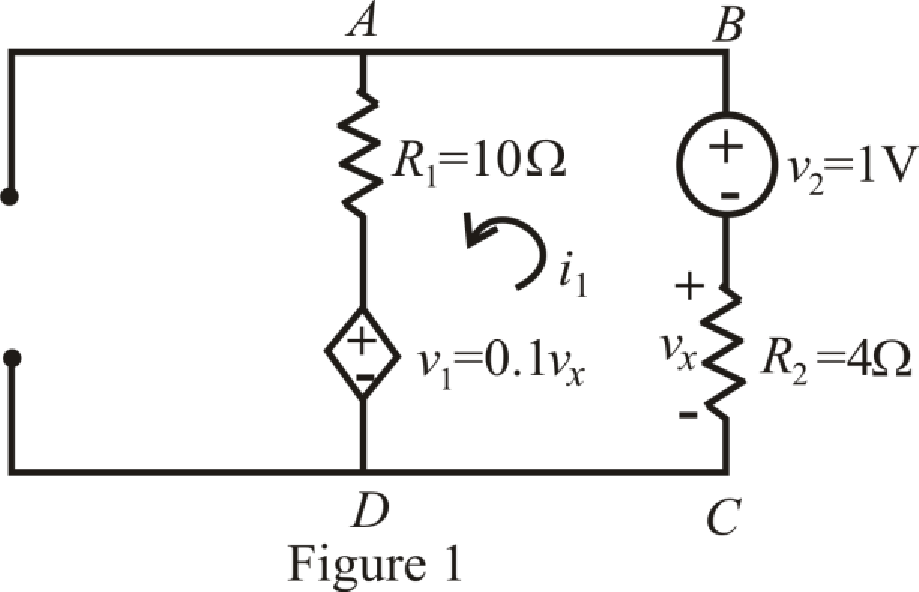
Refer to the redrawn Figure 1.
Circuit is drawn for without dielectric resistor.
The expression for Kirchhoff’s voltage law in mesh
Here,
Substitute
The expression for
Here,
Substitute
Substitute
Rearrange equation (6) for
Simplify for
Substitute
Substitute
So, value of time constant without dielectric is
To find equivalent resistance of a circuit, independent sources are replaced by their internal resistances. Therefore, replace current source by open circuit.
Circuit is containing dependent voltage source. So, to find equivalent resistance connect a voltage source of
The circuit diagram is redrawn as shown in Figure 2.

Refer to the redrawn Figure 2:
Circuit is drawn for resistor with dielectric.
The expression for KVL in mesh
Here,
The expression for KVL in mesh
Here,
Substitute
Substitute
Rearrange (10) for
Substitute
Rearrange equation (12) for
Substitute
Rearrange equation (13) for
Simplify for
Substitute
Substitute
So value of time constant with dielectric is
The expression for percentage change in time constant with dielectric resistor is as follows;
Here,
Substitute
Conclusion:
Thus, value of time constant without dielectric is
(b)
Calculate
Answer to Problem 77E
Value of voltage
Explanation of Solution
Given Data:
Value of time
Formula used:
The expression for voltage is as follows:
Here,
The expression for the final response is as follows:
Here,
The expression for current flowing through capacitor is as follows:
Here,
Calculation:
The circuit diagram is redrawn as shown in Figure 3 for
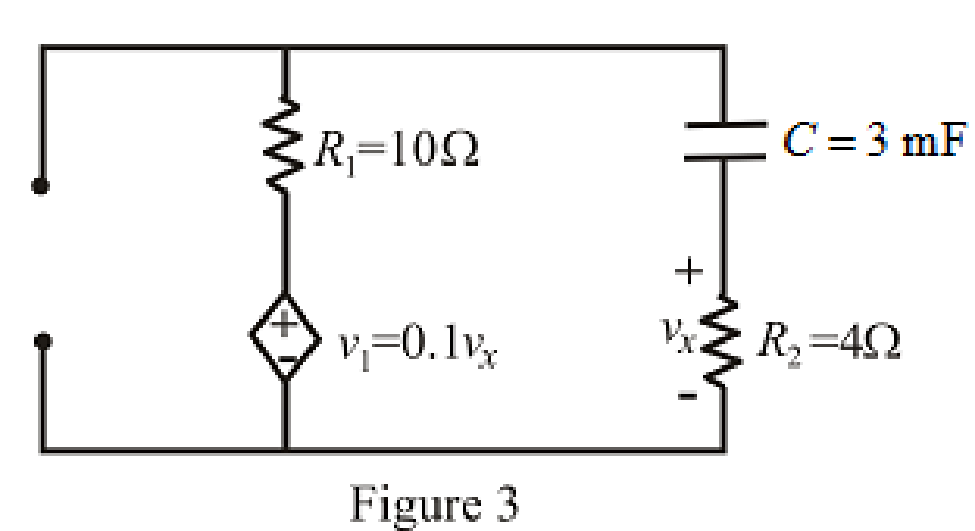
Refer to the redrawn Figure 3:
Circuit is drawn for resistor without dielectric.
As there is no independent source present in the circuit which means voltage across capacitor is also
So, value of
At
Therefore,
So,
The circuit diagram is redrawn as shown in Figure 4 for

At
So, capacitor behaves as open circuit.
The circuit diagram is redrawn as shown in Figure 5 for
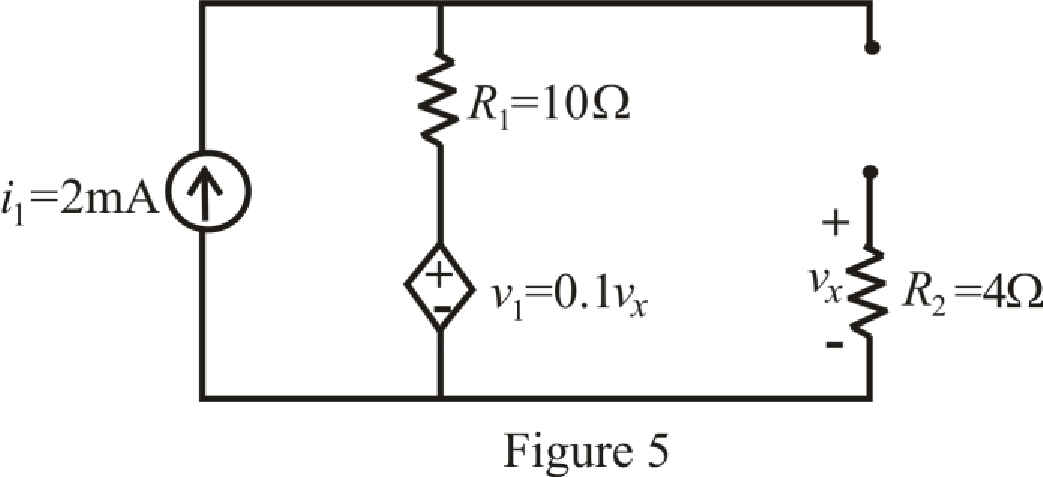
Refer to the redrawn Figure 5:
The expression for voltage
Here,
As capacitor is open circuited, current flowing through resistor
Which means value of voltage
Substitute
The circuit diagram is redrawn as shown in Figure 6 for
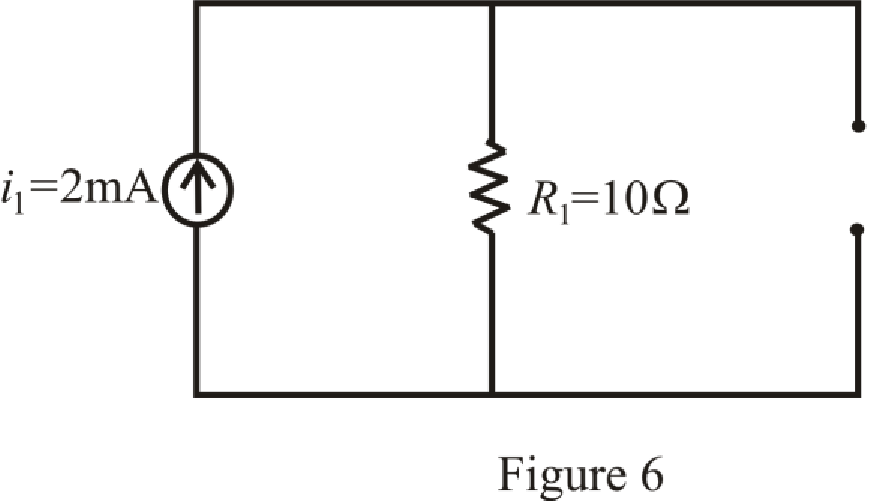
Refer to the redrawn Figure 6:
Substitute
So,
Substitute
Substitute
Substitute
The expression for voltage
Here,
Substitute
So, value of voltage
Circuit is drawn for resistor with dielectric.
The circuit diagram is redrawn as shown in Figure 7 for
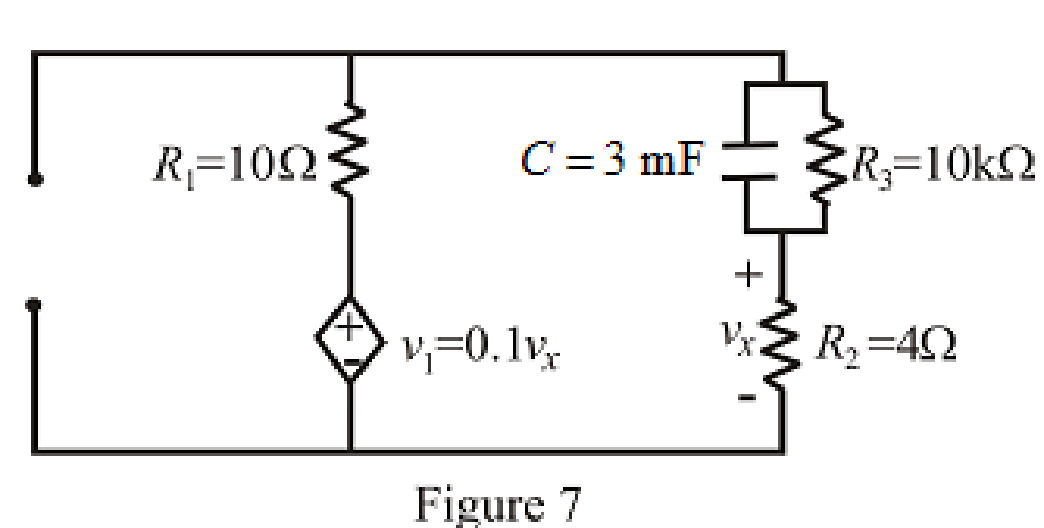
Refer to the redrawn Figure 7:
As there is no independent source present in the circuit which means voltage across capacitor is also
So, value of
At
Therefore,
So,
The circuit diagram is redrawn as shown in Figure 8for
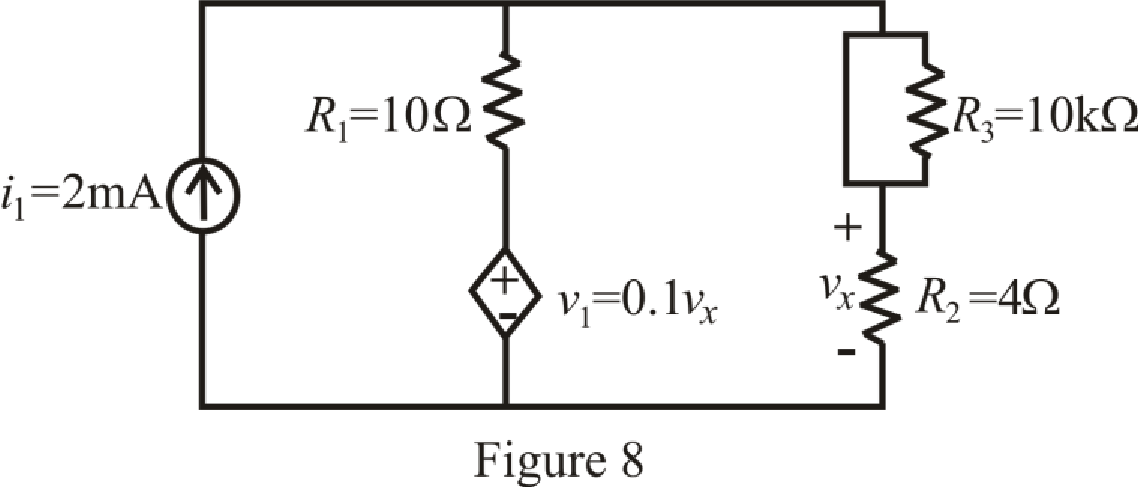
At
So, capacitor behaves as open circuit.
The circuit diagram is redrawn as shown in Figure 9 for
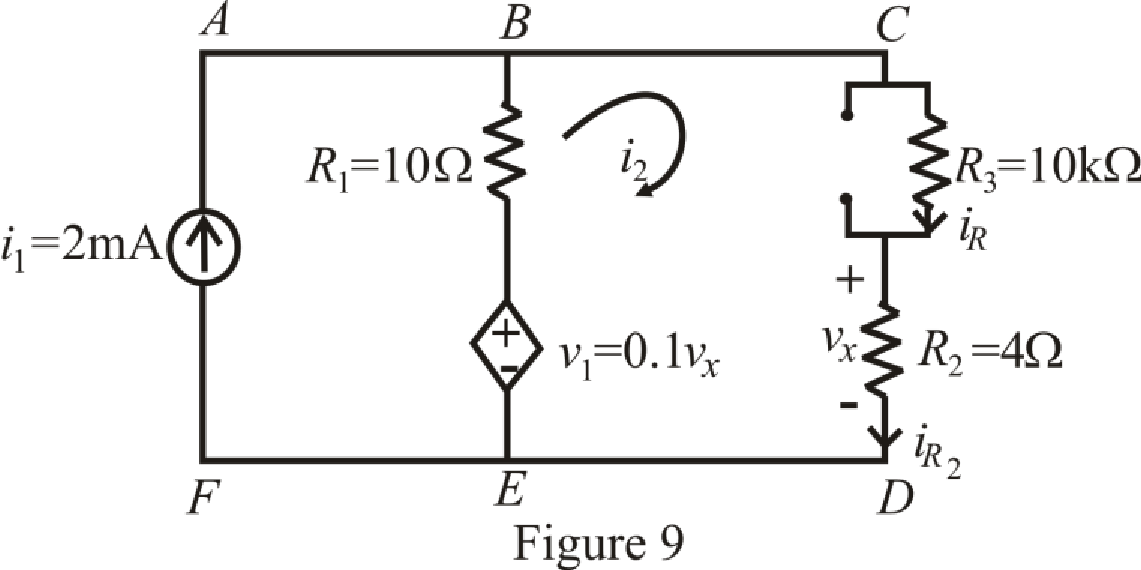
Refer to the redrawn Figure 9:
The expression for KVL in mesh
Here,
Substitute
The expression for voltage
Here,
Substitute
Substitute
Rearrange equation (24) for
Simplify for
Substitute
So,
Substitute
Substitute
Substitute
Substitute
The expression for current
Here,
Substitute
The expression for current
Here,
Substitute
The expression for voltage
Here,
Substitute
So value of voltage
The expression for percentage change in voltage
Here,
Substitute
Conclusion:
Thus, value of voltage
Want to see more full solutions like this?
Chapter 8 Solutions
Loose Leaf for Engineering Circuit Analysis Format: Loose-leaf
- Calculate the current in an RLC circuit with resistances R=11 ohms, L=0.1 H, and C=10^-2 F that is linked to the source V(t)= 10sin 377t. Assume that the capacitor charge and current are both zero at time t=0.arrow_forwarddesign a circuit consisting of 6pcs 5uF capacitors whose equivalent capacitances is 11uFarrow_forwardThe switch in the circuit of Fig. 8.91, often called a make-before-break switch (since during switching it briefly makes contact to both parts of the circuit to ensure a smooth electrical transition), moves to position b at t = 0 only after being in position a long enough to ensure all initial transients arising from turning on the sources have long since decayed. (a) Determine the power dissipated by the 5 - resistor at t = 0−. (b) Determine the power dissipated in the 3 - resistor at t = 2 ms.arrow_forward
- A series circuit has a capacitor of 1.5625x10^(-8)F a resistor of 2x10^4 ohms, and an inductor of 1H. If the initial charge on the capacitor is zero,. if a 12-volt battery is connected to the circuit and the circuit is closed at t=0, determine the charge on the capacitor at any time tarrow_forwardA series RLC circuit having a resistance of 8 ohm, inductance of 50 mH and capacitance of 90 µF is connected across a 150 V, 50 Hz supply. Calculate (1) the current (2) the power factorarrow_forwarddifferential equations applications. A 12-volt battery is connected to a series circuit in which the inductor is 1/2 henry and the resistance is 10 ohms. Determine current i, if the initial current is zero.arrow_forward
- A parallel RLC circuit containing a resistance of 1kΩ, an inductance of 142mH and a capacitor of 160uF are connected in series across a 240Vrms, 60Hz supply a. Calculate the impedance of the parallel RLC circuit (Z), and the current drawn from the supply (Is)arrow_forwardA series LR circuit has a variable inductor with theinductance L(t) is defined by intervals.Find the current i(t) if the resistance is 0.2 ohms, the voltageapplied is E(t) = 4 volts; knowing that i(0) = 0.arrow_forwardFor the circuit shown below, find the equivalent inductance L_eq. All inductors are given as 25 mH.arrow_forward
- Circuit analysis 2 For the circuit shown below, the voltage in the capacitor at time 1 = 0 and (0) which is equal to A)-1 B)1 C)2 D)-2 E)4arrow_forward(Draw the diagram) Consider the RC circuit in which R=0.5 Ω, C=0.1 F, and E=20 V. Given that the capacitor has zero initial charge, determine the current in the circuit after 0.25 seconds.arrow_forwardConsider the following circuit in which the inductor current and the capacitor voltage are equal to zero at t = 0 s. Find the value of v at t = 2 s.arrow_forward
 Introductory Circuit Analysis (13th Edition)Electrical EngineeringISBN:9780133923605Author:Robert L. BoylestadPublisher:PEARSON
Introductory Circuit Analysis (13th Edition)Electrical EngineeringISBN:9780133923605Author:Robert L. BoylestadPublisher:PEARSON Delmar's Standard Textbook Of ElectricityElectrical EngineeringISBN:9781337900348Author:Stephen L. HermanPublisher:Cengage Learning
Delmar's Standard Textbook Of ElectricityElectrical EngineeringISBN:9781337900348Author:Stephen L. HermanPublisher:Cengage Learning Programmable Logic ControllersElectrical EngineeringISBN:9780073373843Author:Frank D. PetruzellaPublisher:McGraw-Hill Education
Programmable Logic ControllersElectrical EngineeringISBN:9780073373843Author:Frank D. PetruzellaPublisher:McGraw-Hill Education Fundamentals of Electric CircuitsElectrical EngineeringISBN:9780078028229Author:Charles K Alexander, Matthew SadikuPublisher:McGraw-Hill Education
Fundamentals of Electric CircuitsElectrical EngineeringISBN:9780078028229Author:Charles K Alexander, Matthew SadikuPublisher:McGraw-Hill Education Electric Circuits. (11th Edition)Electrical EngineeringISBN:9780134746968Author:James W. Nilsson, Susan RiedelPublisher:PEARSON
Electric Circuits. (11th Edition)Electrical EngineeringISBN:9780134746968Author:James W. Nilsson, Susan RiedelPublisher:PEARSON Engineering ElectromagneticsElectrical EngineeringISBN:9780078028151Author:Hayt, William H. (william Hart), Jr, BUCK, John A.Publisher:Mcgraw-hill Education,
Engineering ElectromagneticsElectrical EngineeringISBN:9780078028151Author:Hayt, William H. (william Hart), Jr, BUCK, John A.Publisher:Mcgraw-hill Education,





